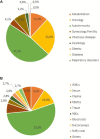Raising to the Challenge: Building a Federated Biobank to Accelerate Translational Research-The University Biobank Limburg
- PMID: 31750305
- PMCID: PMC6842921
- DOI: 10.3389/fmed.2019.00224
Raising to the Challenge: Building a Federated Biobank to Accelerate Translational Research-The University Biobank Limburg
Abstract
Irreproducibility of research results is one of the major contributing factors to the failure of translating basic research results into tangible bedside progress. To address this, the University Biobank Limburg (UBiLim) was founded by a collaboration between Hasselt University, the Hospital East-Limburg, and the Jessa Hospital. This paper describes the evolution of this process and the barriers encountered on the way. UBiLim evolved from an archival collection over a single-site biobank into a federated structure, supporting translational research at the founding institutions. Currently, UBiLim is a federated biobank, with an established organizational structure and processing, and storage facilities at each of the three sites. All activities are integrated in an ISO15189-accredited Quality Management System and based on (inter)national biobank guidelines. Common methods for processing and storage of a plethora of sample types, suitable for state-of-the-art applications, were validated and implemented. Because the biobank is embedded in two hospitals, the request of researchers to include certain sample types or enroll specific patient groups can quickly be met. Funding has been a major challenge in each step of its evolution and remains the biggest issue for long-term biobank sustainability. To a lesser extent, the Belgian legislation and the operational cost of information management system are also concerns for smooth biobank operations. Nonetheless, UBiLim serves as a facilitator and accelerator for translational research in the Limburg area of Belgium that, given the fields of research, may have an impact on international patient care.
Keywords: UBiLim; biobank; multi-disciplinary; quality; translational research.
Copyright © 2019 Linsen, Vanhees, Vanoppen, Ulenaers, Driessens, Penders, Somers, Stinissen and Rummens.
Figures




References
-
- Barnes RO, Shea KE, Watson PH. The canadian tissue repository network biobank certification and the college of american pathologists biorepository accreditation programs: two strategies for knowledge dissemination in biobanking. Biopreserv Biobank. (2016) 15:9–16. 10.1089/bio.2016.0021 - DOI - PubMed
LinkOut - more resources
Full Text Sources
Miscellaneous

